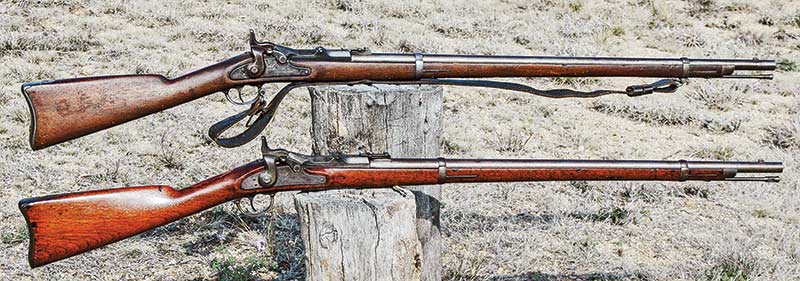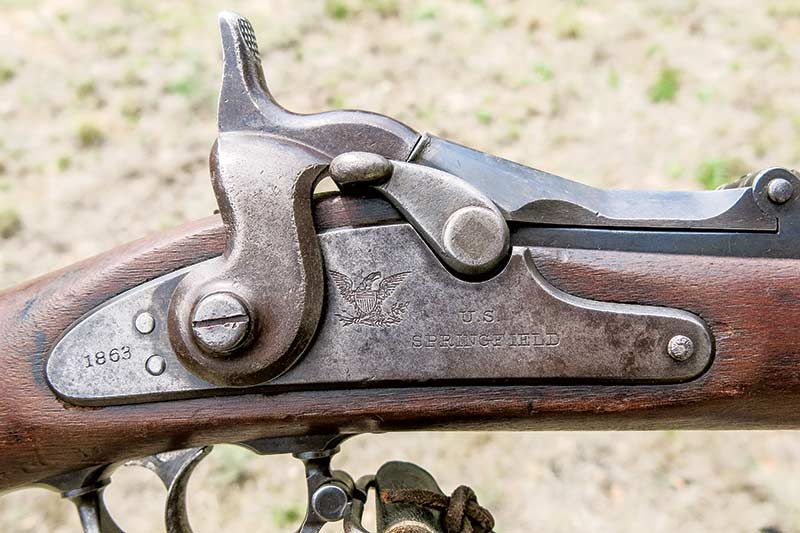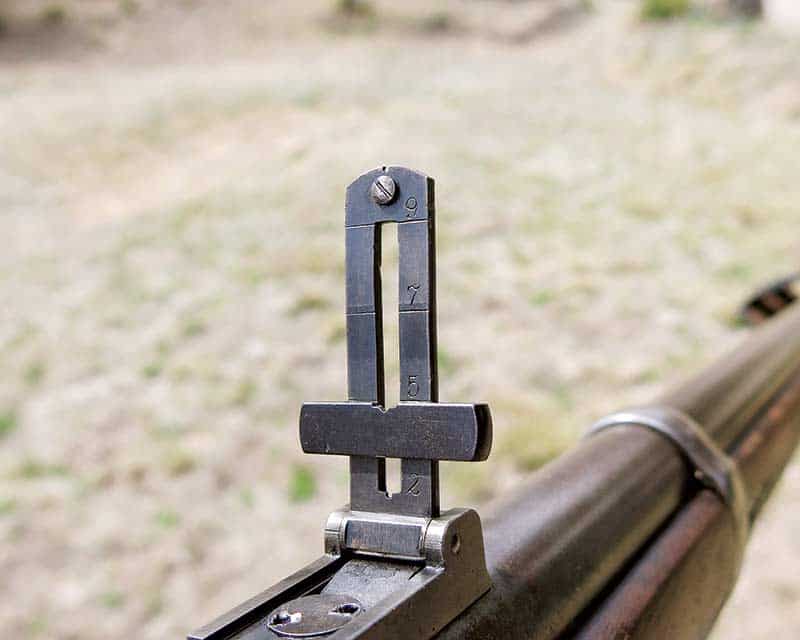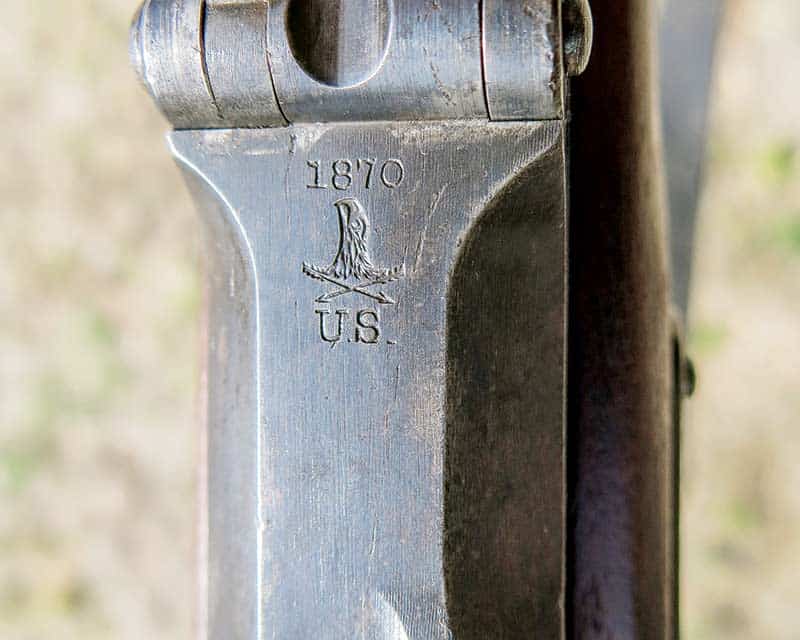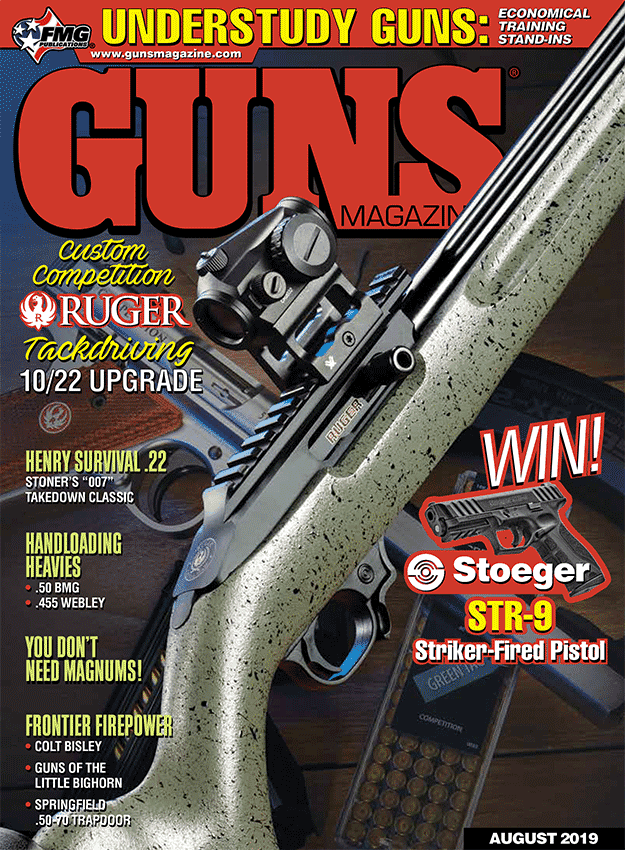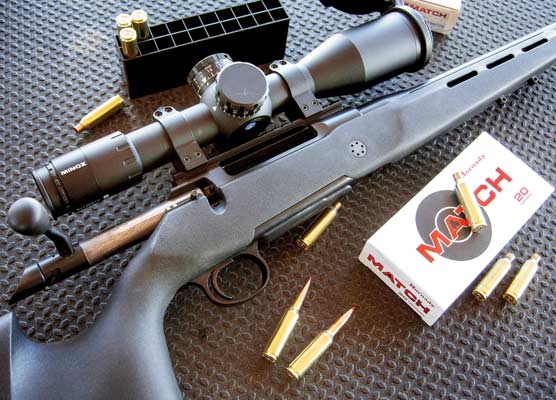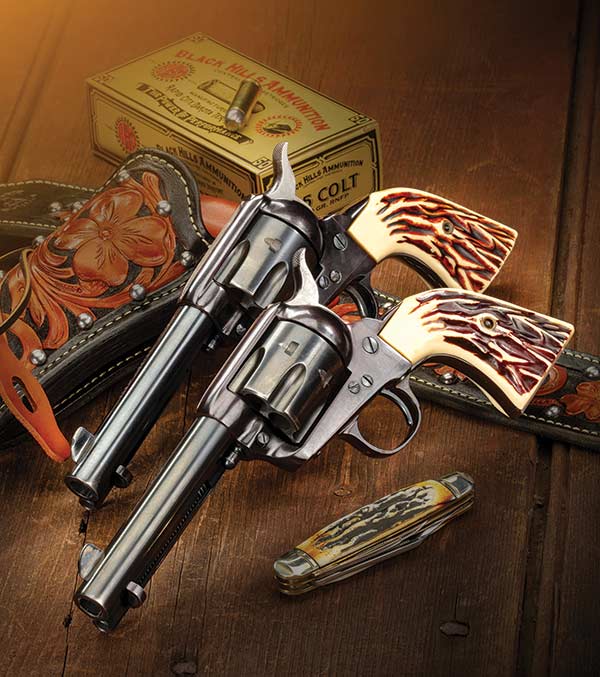The ‘Other’ Trapdoor: the .50-70
THE Allin Conversion was pure Yankee ingenuity
Springfield Trapdoors abound at gun shows, gun shops, pawnshops and in private collections. Some are so beat up they surely were in the Indian Wars. Others are so pristine they look like they were never issued. Most are in decent shooting condition and are still affordable, but 90 percent of the existing Trapdoors out there are .45-70s.
Here’s the story about the other 10 percent — the .50-70 Trapdoors.
An Economical Fix
Imagine yourself as the Chief of Ordnance at the end of the Civil War. You know the muzzleloader is obsolete, but you’re sitting on a stockpile of approximately a million perfectly functional .58 caliber rifled muskets. The Federal Treasury is nearly broke from a four-year apocalyptic conflict, but the military needs a battle-tough, breechloading rifle and they need it now.
Trained as an officer to delegate problem solving to subordinates, you look around, identify your best mechanic and hand him the problem. The mechanic was Erskine S. Allin, the Master Armorer at the Springfield Armory. The assignment you give him?
“Devise a plan for altering the musket into a breechloader for metallic primed cartridges.”
Allin’s solution was ingenious. Starting with a stock Springfield muzzleloading musket, a portion of the barrel just in front of the breech plug was milled off. The face of the breech plug was then milled to form a locking lug seat. The now familiar “Trapdoor” breechblock was fitted and attached to the top of the barrel with a hinge secured by soft solder and a single screw.
The cup face of the percussion hammer was milled off flat. Otherwise, the original 1861 lock, stock, sights, buttplate, trigger guard assembly, barrel bands, band springs, ramrod, etc. were retained. The Springfield muzzleloading musket had been successfully and inexpensively transformed into the Springfield Model 1865 breechloading rifle.
From .58 to .50
And the “metallic primed cartridge”? Because the first Allin conversion used the existing .58 caliber musket barrel, the new cartridge was a copper-cased, .58 rimfire cartridge loaded with a 480-gr. lead bullet and 60 grains of black powder. Velocity of the new round was approximately 960 fps, essentially duplicating the wicked .58 musket round. The .58 caliber rimfire was powerful but short-lived.
One year later, after a series of troop trials, the decision was made to reduce the caliber from .58 to .50 to accommodate a new .50-70 centerfire cartridge recently developed at the Frankfort Arsenal. In the name of frugality, the Trapdoor conversion was accomplished by reaming smooth the .58 caliber rifled barrel and inserting a .50 caliber liner. Thus the Springfield Model 1866 was born, later incorporating a number of improvements to be known as the Models 1868 and 1870.
It didn’t take long before the 1866 Trapdoor and the .50-70 cartridge made history in the hunting world.
William F. (Buffalo Bill) Cody christened his 1866 Trapdoor, “Lucretia Borgia,” and with it killed 2,480 buffalo in a period of 18 months between 1866 and 1868 to feed the crews working on the Kansas-Pacific Railroad. Chambered in Trapdoor, Sharps and Remington, the .50-70 was a popular caliber in the buffalo camps due to the availability of .50-70 Gov’t cartridges at government posts.
General George Armstrong Custer was particularly fond of the .50-70 for hunting and carried a sporterized Model 1866 Trapdoor with double-set triggers. Later in 1873 he switched over to a .50-70 Remington Rolling Block Sporter. Writing to Remington in 1873 at the conclusion of his Yellowstone Expedition, Custer tells of taking 41 antelope, 4 buffalo, 4 mule deer and 3 whitetail with his .50-70, noting the average range of all antelope taken was 250 yards with the farthest being 630 yards.
The Cadet
The two Model 1870 Trapdoors pictured here are typical of the model with one notable exception — one is a standard Model 1870 rifle and the other known as the “Cadet” is a scaled-down Model 1869 (although correctly it carries an 1870 marked breechblock and a full-size .50-70 chamber).
Cadet Model Trapdoors were issued primarily to West Point and Naval Academy cadets and featured shorter barrels, thinner stocks, lighter furniture and — in some models — shorter stocks and shorter chambers for the .50-55 cartridge (the .50-70 loaded with only 55 grains of powder).
What’s particularly interesting to me is both models correctly sport old Civil War locks, the rifle lock being dated “1863” and the Cadet “1865.” Both barrels show signs of their .50-caliber liners at the muzzles.
Load and Accuracy Info
If you’re so lucky to own a .50-70, it’s a forgiving cartridge to load, and in my experience the average .50-70 rifle will outshoot a comparable .45-70 rifle in terms of accuracy. I expect my old, coarse sighted .50-70 Trapdoors, even with a bit of pitting in their bores, to produce 3-shot groups of 3/4 to 1″ groups at 50 yards, and 3 to 4″ clusters at 100. The larger groups at 100 yards aren’t the fault of the rifle or the load, but the product of very crude musket sights.
The loads? First, with all-new Starline brass,
I open up the flash hole with a 3/32″ drill to promote good ignition of black powder or black powder substitutes with Federal 215 Magnum primers. The standard bullet is the 450-gr. Lyman or Lee bullet cast from a 20-1 temper mix that drops from the mold with a diameter of 0.515. No sizing is necessary.
I lubricate them with either SPG lube, Lyman Black Powder Gold or a 50-50 mixture of beeswax and olive oil. If you don’t cast, Buffalo Arms is a reliable source for the cast and lubricated Lyman bullet and Lyman .50-70 dies.
The best performing loads in my 1870 rifle have been 70 grains Swiss 1-1/2 black powder (or Olde Eynsford) at approximately 1,290 fps, and a duplex load consisting of 7.0 grains of IMR 4759 as a priming charge plus 52 grains of Swiss 1-1/2 for approximately 1,315 fps.
For a complete smokeless load, try 9.5 grains of Trail Boss for approximately 845 fps and MOA accuracy. Always use “Trapdoor” reloading data.
That’s the story of the other Trapdoor — the successful and frugal conversion of a Civil War muzzleloading rifled musket into a very workable .50-70 Trapdoor.
www.buffaloarms.com
